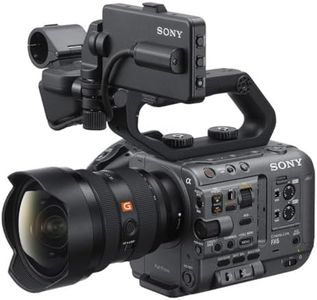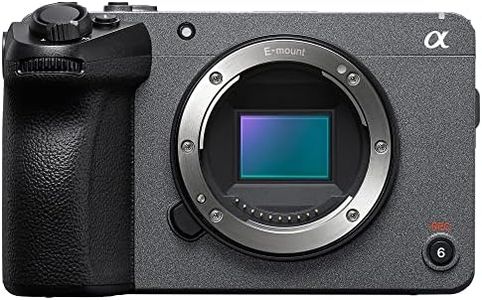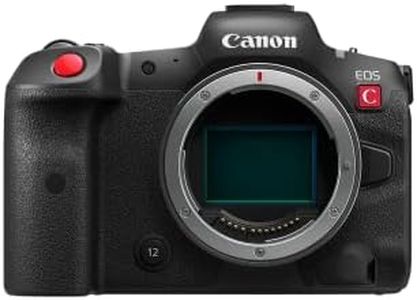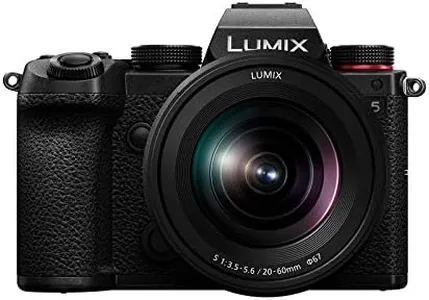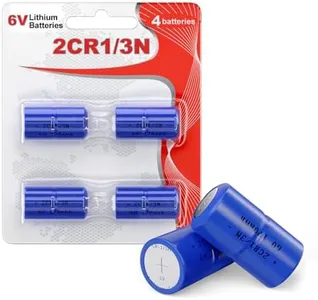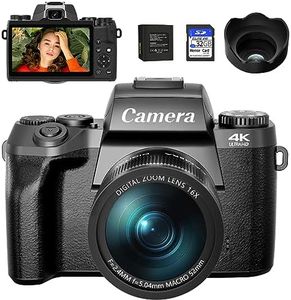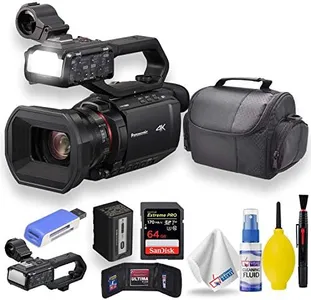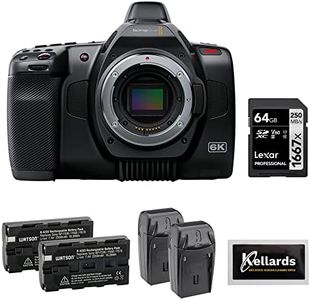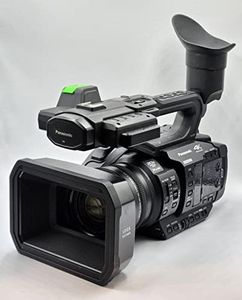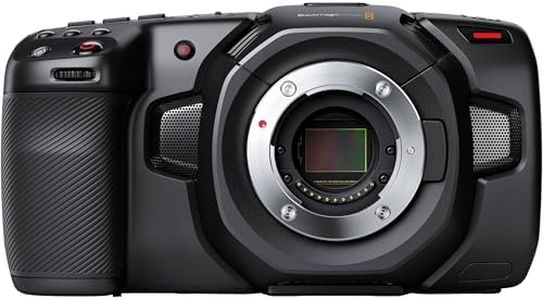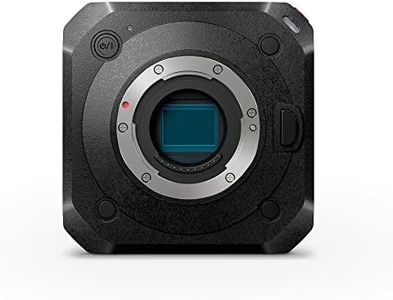10 Best Cinema Cameras For 4K 2025 in the United States
Sponsored
Sponsored
Our technology thoroughly searches through the online shopping world, reviewing hundreds of sites. We then process and analyze this information, updating in real-time to bring you the latest top-rated products. This way, you always get the best and most current options available.

Our Top Picks
Winner
Sony Alpha FX3 ILME-FX3 | Full-frame Cinema Line Camera
Most important from
215 reviews
The Sony Alpha FX3 ILME-FX3 is a full-frame cinema camera designed for professional videographers. One of its main strengths is its 4K full-frame sensor with a notable 15+ stop dynamic range, providing excellent image quality and flexibility in various lighting conditions. It supports high frame rates up to 4K 120p, ensuring smooth and detailed video capture. The camera's S-Cinetone feature allows for a cinematic look inspired by VENICE colorimetry, making it suitable for both film and documentary work.
Additionally, the FX3 offers versatile recording modes with 10-bit 4:2:2 color depth and full pixel readout, catering to high-end production needs. The compact, cage-free design with multiple mounting points ensures ease of use and adaptability in various shooting environments. The XLR top handle is a practical addition for professional audio inputs, enhancing sound recording quality. The in-body cooling fan allows for uninterrupted 4K 60p recording, beneficial for extended shoots.
However, the FX3’s still resolution is relatively modest at 12.1 MP, which may not appeal to those who prioritize photography. Also, it lacks water resistance, limiting its usability in challenging weather conditions. On the connectivity side, the FX3 is well-equipped with Wi-Fi, USB, HDMI, and NFC, ensuring smooth data transfer and remote control options. The dual memory slots supporting Cfexpress Type A and SDXC cards provide flexibility in media management. With strong battery life and the included accessories, the FX3 is a compelling choice for professional filmmakers seeking a robust and versatile cinema camera.
Most important from
215 reviews
SONY ILME-FX6 Cinema Line Full-Frame Camera with SEL24105G
Most important from
27 reviews
The SONY ILME-FX6 is a powerful cinema camera designed for professional filmmakers who value high-quality 4K video capture. It features a 10.2MP full-frame Exmor R CMOS sensor, offering excellent low-light performance and a dynamic range exceeding 15 stops, making it suitable for a variety of lighting conditions. The camera supports high frame rates, including 4K at 120p and FHD at 240p, allowing for smooth slow-motion video.
The fast hybrid autofocus with 627 phase-detection points and Eye-AF tracking ensures precise and reliable focus, crucial for dynamic scenes. Additionally, it includes an electronically controlled variable ND filter, providing greater control over exposure without changing aperture or shutter speed. Connectivity options such as Wi-Fi, USB, HDMI, and NFC are plentiful, enhancing versatility for different shooting and sharing scenarios.
The camera's ergonomic design and user-friendly interface make it comfortable for extended use, although its size and weight might be cumbersome for handheld shooting. Battery life is decent, though it may require additional batteries for longer projects. The codec and bitrate options, including 4:2:2 10-bit QFHD, cater to high-quality video needs, with support for professional audio formats like AAC and PCM. The compatibility with Cfexpress Type A and SDXC memory cards ensures ample and fast storage options. However, the high sensitivity up to ISO 409,600, while impressive, may introduce noise at extreme levels. The price point might be a barrier for some, but for serious filmmakers, the investment could be justified by the camera's robust performance and feature set.
Most important from
27 reviews
SONY Cinema Line FX30 Super 35 Camera
Most important from
520 reviews
The SONY Cinema Line FX30 Super 35 Camera is a solid choice for professional filmmaking, content creation, and video production, catering to those who need high-quality 4K filming. It boasts a 20.1 MP Exmor R APS-C sensor that provides a wide dynamic range and Dual Base ISO, which helps produce low-noise images and enhances the latitude, making it versatile for various lighting conditions.
The camera supports up to 120 FPS, which is great for slow-motion shots, and includes advanced autofocus capabilities with 495 points, ensuring precise and continuous tracking of subjects. The BIONZ XR Processor enhances the performance, contributing to quicker processing of high-resolution images and videos. S-CinetoneTM and other shooting modes, coupled with the support for User LUTs, allow for cinematic looks straight out of the camera without the need for extensive post-production work. The inclusion of image stabilization helps in capturing steady shots even when moving.
It is not water-resistant, which might be a limitation for outdoor shooting in harsh conditions. Battery life is adequate with the included lithium-ion battery but may require spares for long sessions. The camera is also equipped with various connectivity options like Wi-Fi, Bluetooth, and NFC, providing flexibility for remote control and media transfer. On the downside, it doesn't come with a remote, and the lack of internal media means you need external storage solutions like CFexpress Type A or SDXC cards. Its ergonomic design with an articulating LCD screen aids usability, though it's slightly on the heavier side at 1.43 pounds. Audio capabilities are robust with options for both internal and external microphones. The FX30 is a comprehensive tool for those serious about video production, offering a mix of quality, flexibility, and advanced features.
Most important from
520 reviews
Buying Guide for the Best Cinema Cameras For 4K
Choosing the right cinema camera for 4K filming can be a daunting task, but with the right knowledge, you can find the perfect fit for your needs. Cinema cameras are designed to provide high-quality video recording with advanced features that cater to professional filmmakers. When selecting a cinema camera, it's important to consider various specifications that will impact the quality and usability of your footage. Here are some key specs to consider and how to navigate them to find the best camera for you.FAQ
Most Popular Categories Right Now



